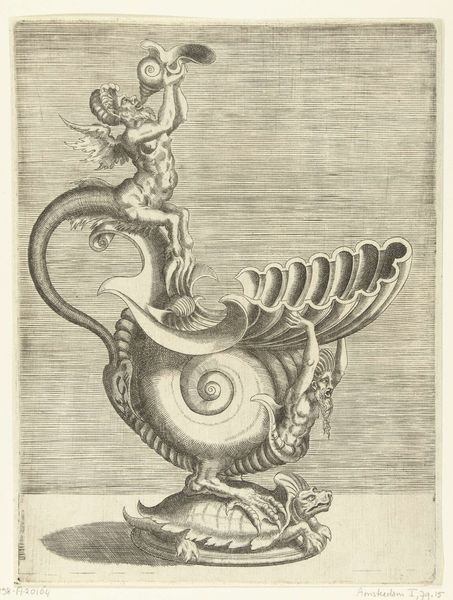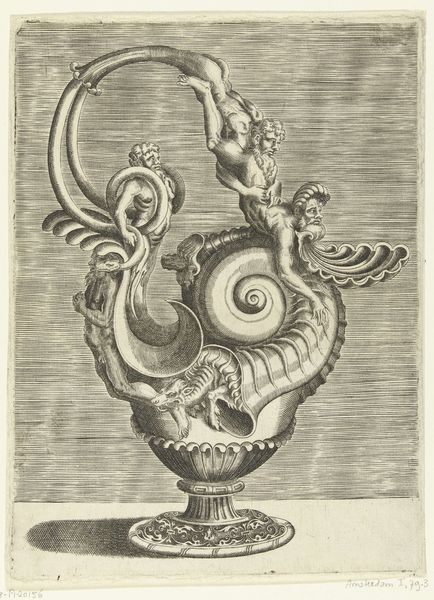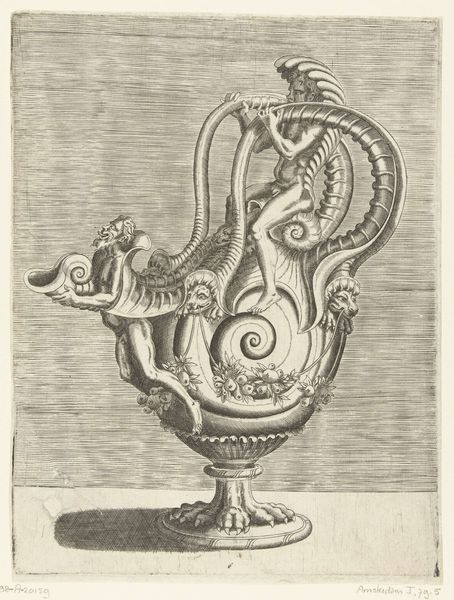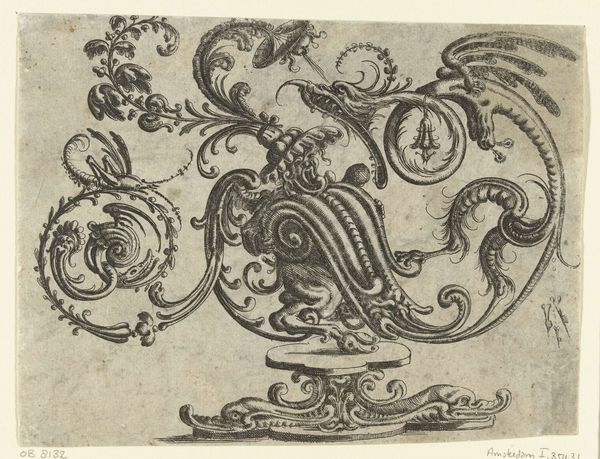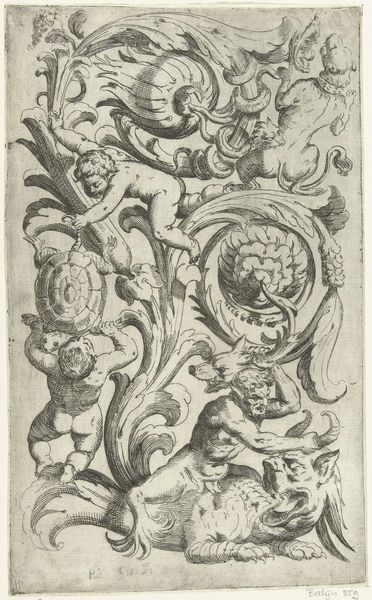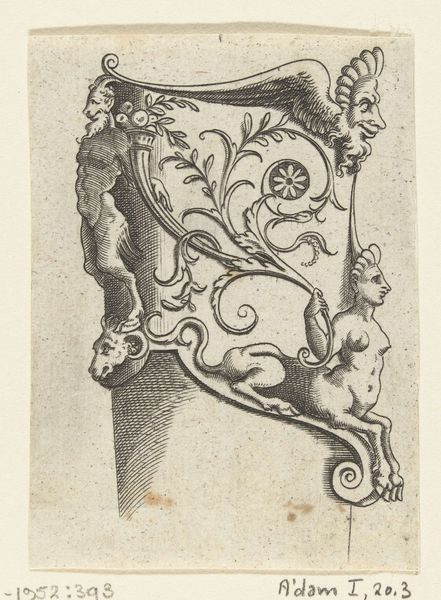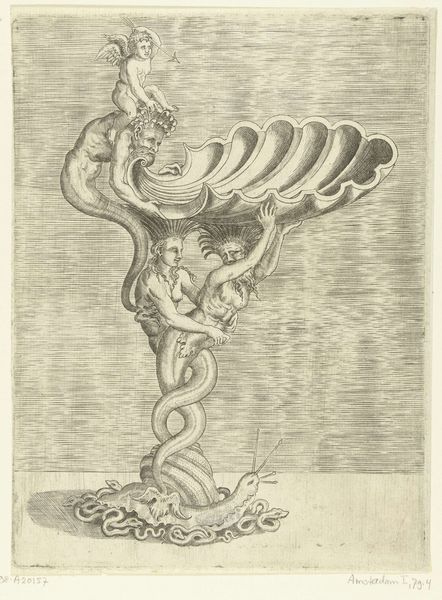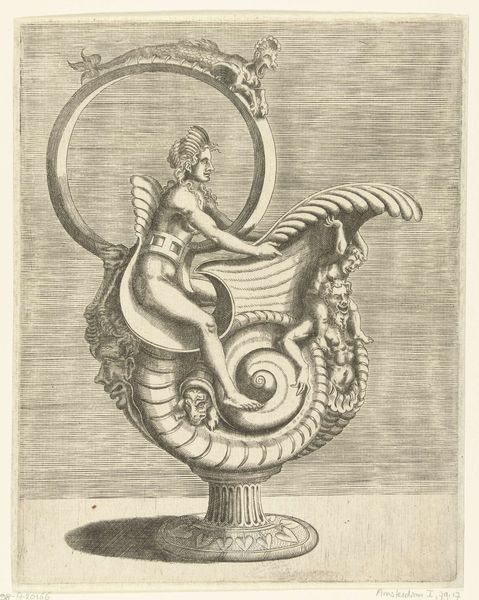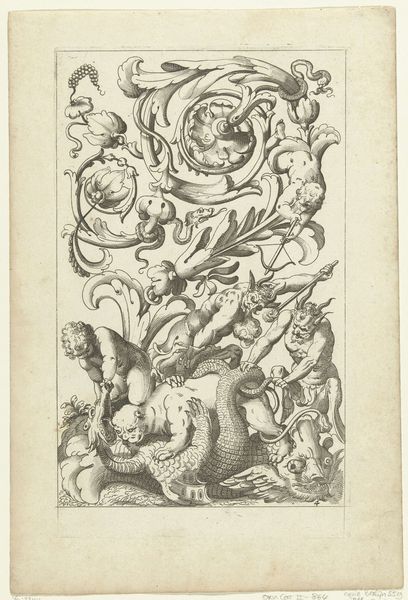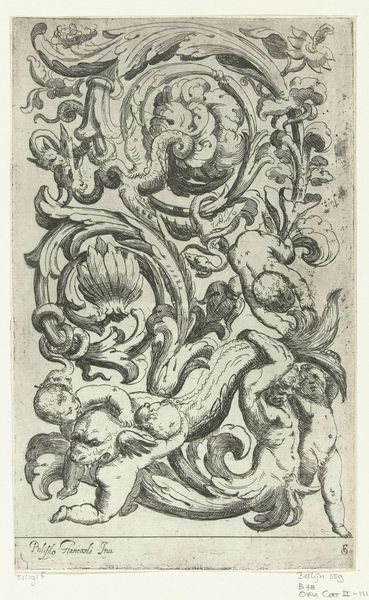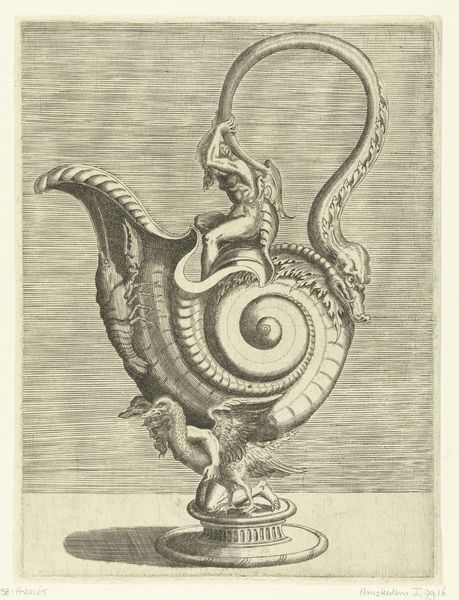
Kan in de vorm van een slakkenhuis, rustend op de rug van een man die op een schildpad zit 1548
0:00
0:00
engraving
#
allegory
#
caricature
#
mannerism
#
figuration
#
form
#
11_renaissance
#
history-painting
#
engraving
Dimensions: height 224 mm, width 169 mm
Copyright: Rijks Museum: Open Domain
Curator: Oh, I'm immediately struck by how precarious it all looks! There's this man bearing the weight of…everything on his back. Slightly unsettling, if I'm honest. Editor: Indeed. What we’re looking at is an engraving from 1548 by Balthazar van den Bos, currently held here at the Rijksmuseum. The wonderfully descriptive title is, "Kan in de vorm van een slakkenhuis, rustend op de rug van een man die op een schildpad zit", or translated, "Jug in the shape of a snail shell, resting on the back of a man sitting on a turtle". Curator: A jug, you say? It feels more symbolic, doesn't it? The figure struggling, the snail shell… perhaps it speaks to the burden of the everyman, slowly inching forward with the weight of society bearing down. Editor: Or perhaps it is about the making? This object speaks of mannerism through form and figuration; the engraver using readily available metals, transforming functional designs from the Renaissance period. Curator: Right! The sheer artistry of manipulating these materials to create such a bizarre yet beautiful form is impressive. See the shell's swirling details. There is beauty within the weight of daily drudgery. It's really striking how he emphasizes form. Editor: Van den Bos also emphasizes labor. Consider the intricate design, the time, the expertise needed to produce this object. It was about demonstrating wealth, yes, but also about the labor embedded within the metalwork. It raises questions about class and status in Renaissance society. Curator: Perhaps! I get lost thinking how everything in this world can be considered as heavy, and there's someone out there working through it, trying to carry what can barely be touched or moved! Editor: Right—I agree—engravings also democratized images and ideas, making luxury designs like this available to a wider audience through replication and exchange. The print acted as a means of cultural transmission and facilitated consumption habits, desires, or taste to rise amongst a bigger group of people, a new audience. Curator: Food for thought! I hadn’t considered its social context, seeing its purpose now transforms my relationship to the artwork, not only as aesthetic form, but how the process involved can trigger and cause new perceptions for others to learn through it! Editor: Exactly. I'm walking away seeing new connections here, understanding a little more how society shapes art, and art, in turn, shapes us.
Comments
No comments
Be the first to comment and join the conversation on the ultimate creative platform.
